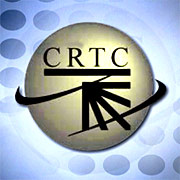Recently, the Canadian Radio-Television Telecommunications Commission (CRTC) introduced regulations turning down television commercial volumes. Over 7000 Canadians complained the volume of television commercials was aggravating last year, which is 10 times as many complaints as the previous 3 years combined. Under the new regulations, digital broadcasters are required to transmit commercials and programs at the same volume.
With so many complaints, one has to wonder how advertisers are going to respond? Clearly loud commercials are no longer as effective. In my opinion, this is a welcome move. I find loud commercials unattractive and consequently am less likely to pay attention to them. With so many complaints, one would think the commercials were starting to negatively brand companies. However, the CRTC is warning the public to keep reasonable expectations. Noise is relative and an average volume commercial following a quiet program could still produce a booming effect.
Does this mean advertisers will continue to try broadcasting loud ads? Research shows television ads are still a very effective way to reach target markets and though online advertising is on the rise, television is not in decline. In conclusion, these regulations will probably mitigate but not solve the problem of blaring television commercials.
Articles:
http://www.cbc.ca/news/technology/story/2012/08/30/crtc-commercial-volume.html
http://www.huffingtonpost.ca/2012/08/30/commercials-volume-loud-crtc-canada_n_1844858.html
http://www.luxurydaily.com/are-television-ads-effective/
Image:
CBC News. “CRTC Logo.” Photo. CBC.ca 07 Apr. 2006. 30 Sept. 2012
<http://www.cbc.ca/news/background/crtc/>.


There are two components to the sound you hear on your device. Only one of them is controlled by federal laws. The maximum decibel level is regulated.
To make commercials stand out, they are not allowed to exceed regulated decibel levels, so here is what they do to make sure the commercials get your attention:
Sound can be thought of simply as a series of different pulses per second…consisting of no sound pulse, maximum level sound pulses and a whole range of pulses in between. All speech and sound we hear comes with this variety. Using a digital mixer, engineers boost all the low level sound pulses in the commercials to closer to the maximum decibel levels.
What you hear with commercials is not louder sound but many more sound pulses per second at near the maximum levels than normal comfortable communication or even the rest of the shows you watch.
People and regulators get caught up on maximum sound levels and so they can’t solve the problem.
We need to be talking about the average sound energy levels PER SECOND. Not simply a maximum level.
Regulating this can be problematic, for example: there are minutes in every horror film where they deliberately compress the energy per second to create an intense moment in the film. The same is true for dramatic orchestral moments (think about the opening to Star Wars).
One way to do this is assign a reasonable arbitrary algorithm that forces commercials to play at an average energy level per second that averages the energy levels at various time points in the commercial.
An example might be: 20% of max volume for up to 80% of any one minute of one commercial, 30% of max volume for up to 70% of the minute of commercial, 90% of max volume at 10% of the commercial’s sixty seconds, etc, etc, etc Creating a range that is acceptable to the ear (I just invented these simple numbers to explain the concept…they are no where near the correct ones to use but any digital sound engineer can do the math on a given TV show and calculate more appropriate values).
My point here is only that we need to be much more educated on the problem so we can force regulators to solve it correctly and not a half way measure like maximum decibels (which is already regulated and not working).
We need to motivate some smart people to fix this problem and I’m not smart enough.